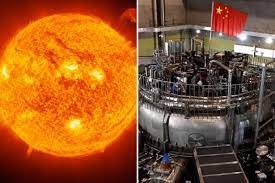China, also called the People’s Republic of China, is a country in East Asia. It is bordered by 14 different countries. Beijing is the capital of the country, Shanghai is the financial hub of the country and Shenzhen is the hub for technology and innovation for the country.
China has a controlled society, with lack of freedom to speech and expression, propaganda and censorship has limited creativity and restricts the development of new ideas. In spite of many restrictions China is ranked 14th in the Global Innovation Index which says that “China stands out for producing innovations that are comparable to those of the high-income group.”
China is working upon major fields of innovation and technology like – Artificial Intelligence (AI), big data, Fifth-generation networking (5G), Nanotechnology, Biotechnology, robotics, the Internet of Things (IoT) and quantum computing. China is presently earning in 4 major categories of innovation – Manufacturing, digital platform and associated markets, the utilization of apps and other technologies designed to solve societal problems and basic science R&D in fields such as computing and biotechnology.
One of the recent developments in China is that it has successfully created its own sun which is 5 times more powerful than the actual sun. It is a nuclear fusion technology named EAST – Experimental Advanced Superconducting Tokamak reactor, located in the Institute of Plasma Physics of Chinese Academy of Sciences. It is the world’s first non-circle cross-section superconducting tokamak. The purpose of this technology is to replicate the natural nuclear fusion that happens in the Sun to create energy. The aim of this technology is to create clean and renewable energy along with producing minimum waste by 2040. This experiment has been in process since 2006 in China and it has made many records while testing them.
In a recent test that was run in December 2021, the artificial sun ran at 70 million degree Celsius for as long as 1,056 seconds i.e., 17 minutes and 36 seconds. Gong Xianzu, in charge of the EAST experiment states that the recent development in the project is the milestone that breaks all the previous records. To reach this milestone, the project consisted of 10,000 Chinese and foreign scientific researchers which began in early December 2021 and is expected to be completed by June 2022.
The artificial sun has reached a milestone of 70 million degree Celsius in a few minutes but the challenge is to maintain that temperature of the plasma for longer duration to create unlimited energy with less waste generation.
The core of the actual sun is at a temperature of 15 million Degree Celsius which is created through nuclear fusion i.e., 2 hydrogen atoms fuses and creates helium. In this process heat and photons (light) is created. When it comes to natural sources of energy such as solar energy or wind energy or considering the energy produced through coal which is a non-renewable source of energy is not fulfilling the needs of the people and is also generating a lot of waste and greenhouse gasses which is harmful for the environment. Creating one’s own sun leads to unlimited sources of energy with less waste being generated and being less harmful for the environment. The temperature of the artificial sun must be considerably higher than the temperature of the actual sun because one, all the elements must fuse in the proper proportion and second, the artificial sun cannot create the gravitational force which the actual sun has.
China is not the only country which is working on its artificial sun, many other countries across the world are in the race to create milestones and to save the environment, like France, UK, USA, European Union, India, Russia, Japan and many more.

